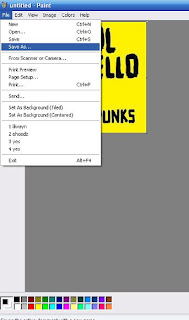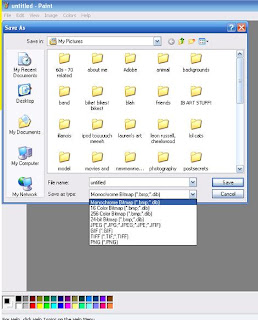ok, so at some point in owr boring lives we have wished to learn the old art of silk screen- printing. for those of you whom are not familiar with silk-printing,
silk screen-printing is a printing technique that uses a woven mesh to support an ink-blocking stencil. The attached stencil forms open areas of mesh that transfer ink as a sharp-edged image onto a substrate. A roller or squeegee is moved across the screen stencil, forcing or pumping ink past the threads of the woven mesh in the open areas.
Screen printing is also a stencil method of print making in which a design is imposed on a screen of silk or other fine mesh, with blank areas coated with an impermeable substance, and ink is forced through the mesh onto the printing surface. It is also known as "silk screening" or "serigraphy".
(credits to wikipedia)
however, i am going to tech you a cheap/ some what easy wasy to do your very own screen print without having to actually buy a screen, photo emulsion, screen filler, squeegee, etc.
here are the supplies you will need:
- Mod Podge (regular glue will not work)
- an embroidery hoop
- paint brushes (no necessarily new)
- acrylic/fabric paint
- nylon (pantie hoes; they can be old or used)
- a sharpie (or dark colored marker)
- something to print on
- blow dryer (optional)
all of these items can be purchased at Michael's (except the nylon pantie hoes)
1. find an image you wish to print. the image you choose must black and white so it is easy to copy onto the nylon.

open your image to the program Paint (every Microsoft computer has it)

go to file and scroll down to save as

then go to the save as type (left to the cancel button) and scroll to the top option Monochrome Bitmap (*.bmp,*.dib)
your image will automatically turn black and white.
print your image onto white paper

tip: you should try to pick a simple image, keep in mind that the black part of the image will be where the paint goes.
2. take your nylon pantie hoes and cut of the top fabric (right were the legs begin) you will then stretch it entirely across the embroidery hoop.

3. place your image under the screen, make sure you have the screen FACING DOWN. this is very important because if you do not have the screen facing down then your image will turn out backwards.

4. Take a sharpie (or dark marker) and color in were you want the paint to go (a.k.a the black) Once you are finished with that, you can remove the image from under the screen.
5. Now start painting in the mod podge in the negative space (a.k.a all of the white area). make sure you flip the screen over for this process; you should also make sure to cover up any areas that you don't want the paint to bleed through. when you are done, let it dry for about and hour. to speed up the process you can use a blow dryer.

6. YOU ARE READY TO PRINT! turn your screen over, then try to completely cover the image with your paint. place the screen above your desired form of material, take a somewhat large brush and then press on your image. you're going have to experiment and see what works. when you figure out what works, you can make as many prints as you want!
7. if you wish to print in other colors, make sure you rinse of the paint. don't worry, the mod podge will not wash off. if you remove the nylon from the hoop, it will shrink and be hard to re-stretch, so make sure you are done printing that image when you remove the nylon.

good luck, if you have any questions about anything let me know!





No comments:
Post a Comment